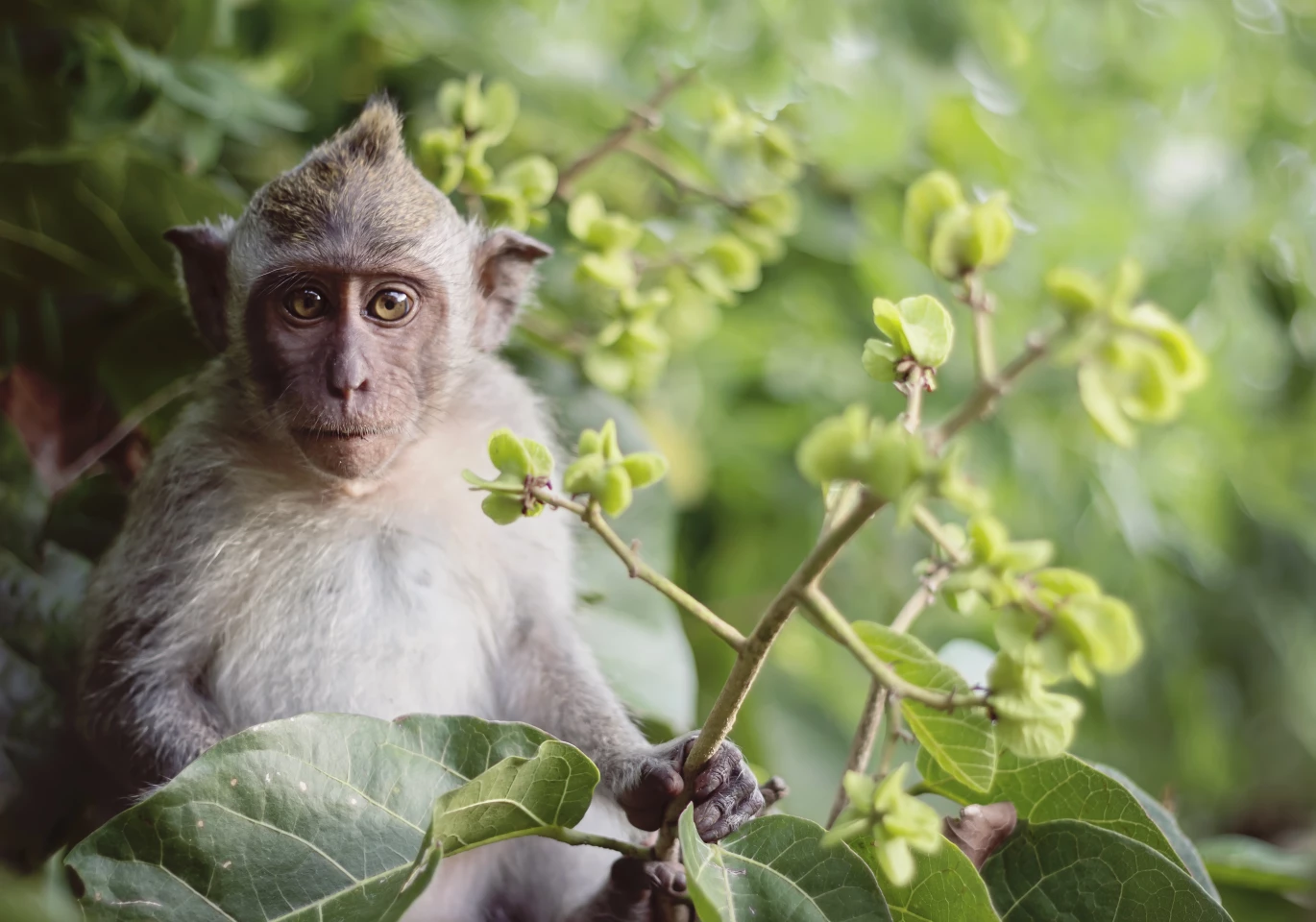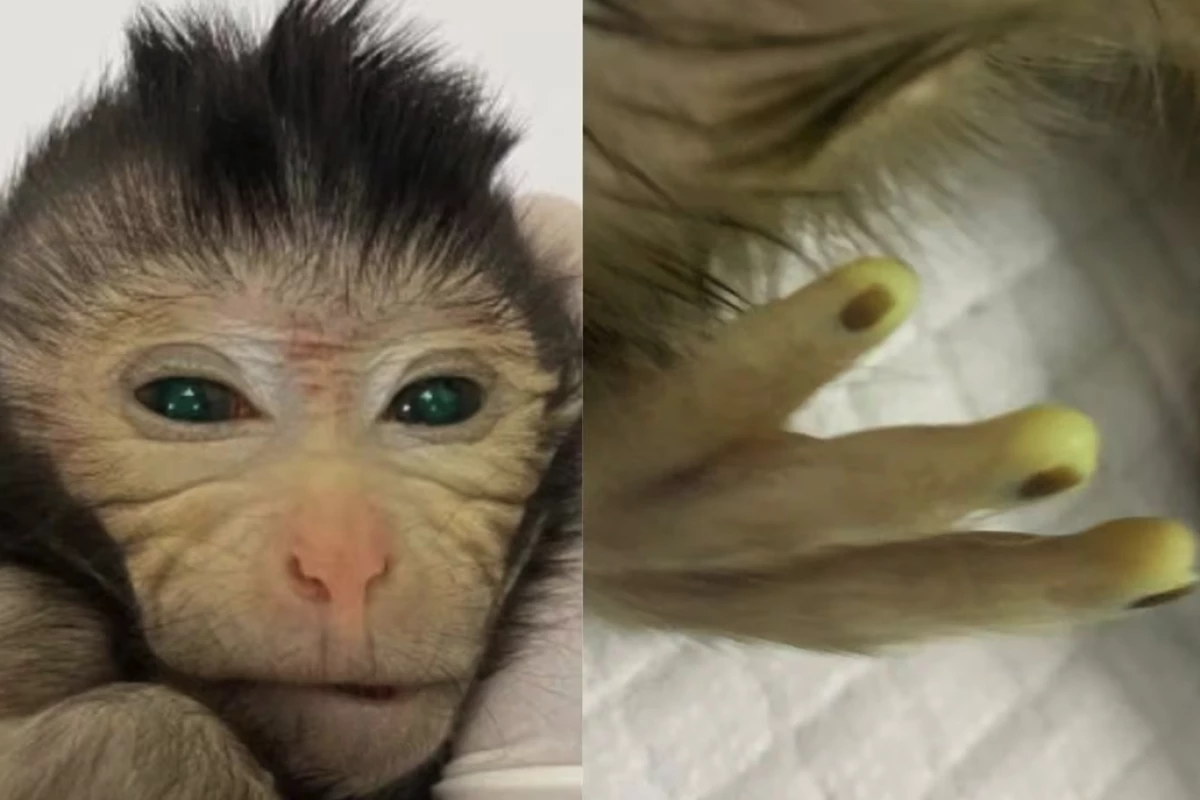In what sounds a little like the opening scenes from a sci-fi horror film, a team of scientists has taken seven-day-old monkey embryo stem cells and injected them into an unrelated four-to-five-day embryo from the same species, which was then injected into a female monkey. The female monkey later delivered a fully formed male, making it the world’s first live birth of a chimeric non-human primate.
While scientists have used this method to create both monkey-human embryos (which were terminated before further development) and live individuals, it's the first time the introduced genetic material has made up such a significant percentage of the newborn's tissue composition. The injected stem cells formed 92% of the monkey's brain tissue, and overall accounted for 67% of the animal's makeup.
“This is a long-sought goal in the field,” said senior author Zhen Liu, of the Chinese Academy of Sciences (CAS). “This work could help us to generate more precise monkey models for studying neurological diseases as well as for other biomedicine studies.”
The scientists, however, were stunned not just by the birth but the record-high contribution of the embryonic stem cells that went into fetus development. Green fluorescent protein was used to stain these pluripotent cells – or cells that had the ability to differentiate into all the distinct types needed to ‘build’ such an animal – to monitor how much of this genetic material was contributing to the monkey’s development.
After birth, scientists observed that the baby cynomolgus macaque (Macaca fascicularis) had distinct patches of fluorescence throughout its body, including at its fingertips and eyes. Analysis through gene sequencing and other tests showed these donor stem cells were present in 26 different types of tissue, forming between 21% and 92% of that tissue.
Overall, an average of 67% of tissue was formed by the injected stem cells, and featured in the brain, heart, kidneys, liver, gastrointestinal tract, testes and more.

“We have a very high level of contribution, with the donor cells forming a big part of the tissues (and) complex structures all over the monkey body,” said Professor Mu-Ming Poo, scientific director of the Institute of Neuroscience at CAS.
Sadly, the young monkey lived for just 10 days, before suffering respiratory failure and hypothermia and needing to be euthanized. The exact cause of this deterioration is not yet known, but Liu believes it could have been the epigenetic differences between the cell types.
Naturally, the ‘Frankenstein’-ing of organisms to create sentient animals for human use has raised serious ethical questions and remains a controversial area of scientific research. A chimera is the name given to a single organism produced from two or more sources of cells with different genetic origins.
This is unlike a clone, which is an organism that’s a genetically identical copy of another. In nature, when monozygotic twinning occurs – the result of an embryo splitting after fertilization – identical twins are a form of cloning.
There is great interest in creating viable chimeric organisms, in order to grow human organs for transplant, and to further understand how human diseases work. The researchers here also table the potential for interspecies chimeric animals to preserve critically endangered species from total extinction.
“This work could help us to generate more precise monkey models for studying neurological diseases, as well as for other biomedicine studies,” said Liu Zhen, senior author of the paper from the Chinese Academy Sciences (CAS).
In the past, scientists have mainly developed chimeric rodents. Yet because of our close ties with primates, monkeys are seen as a key source for greater insights into human physiology and disease.

“Mice don’t reproduce many aspects of human disease for their physiology being too different from ours,” said senior study author Zhen Liu. “In contrast, human and monkey are close evolutionary, so human diseases can be more faithfully modeled in monkeys.”
The study was published in the journal Cell.
Source: Chinese Academy of Sciences







